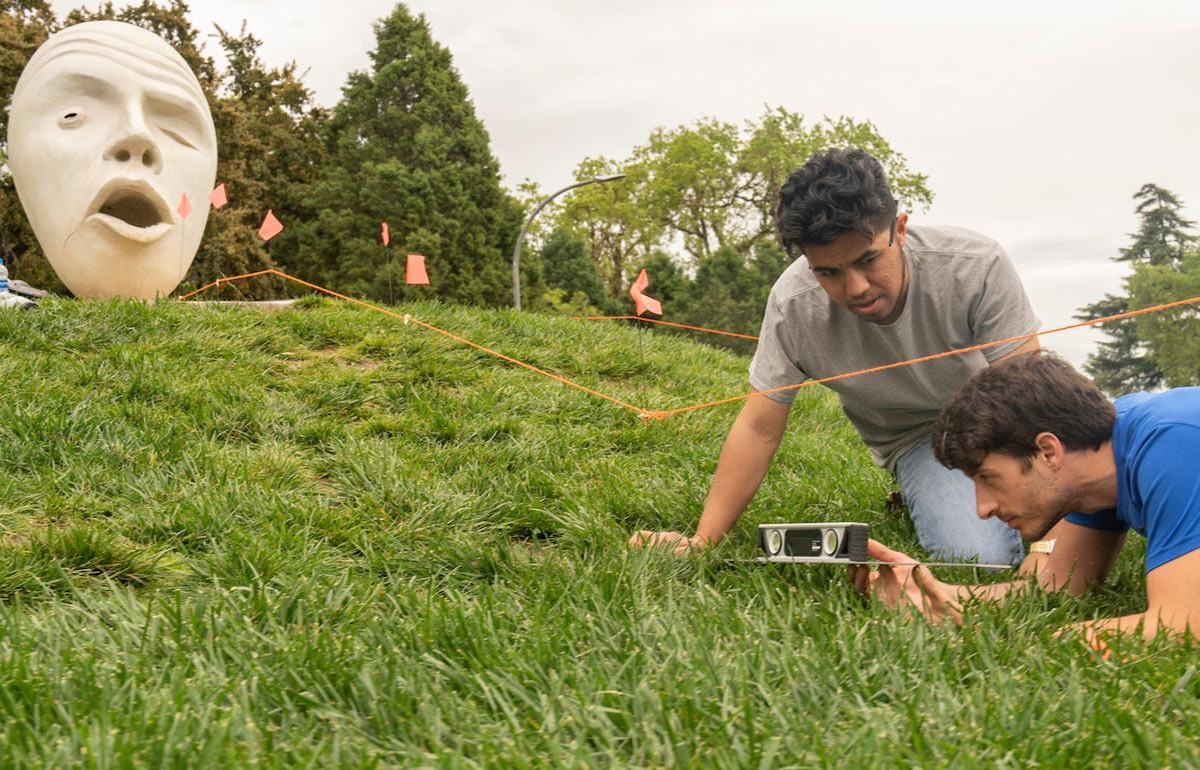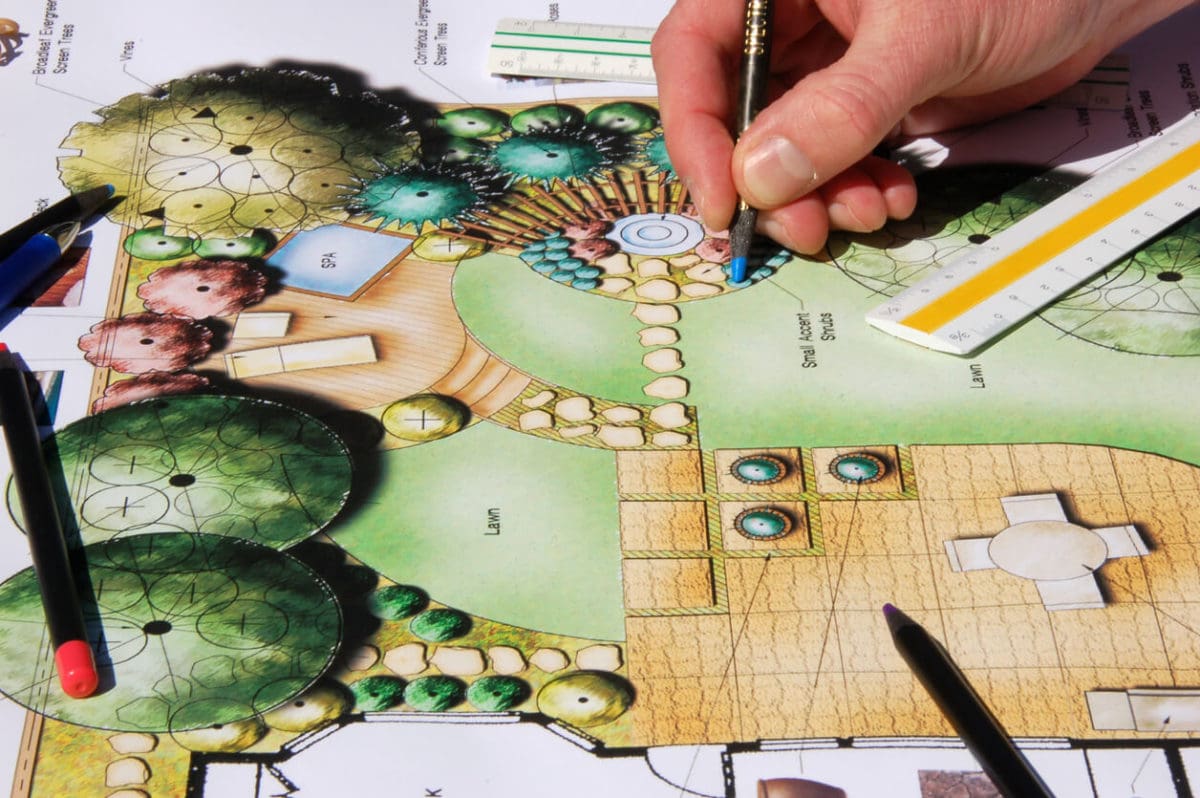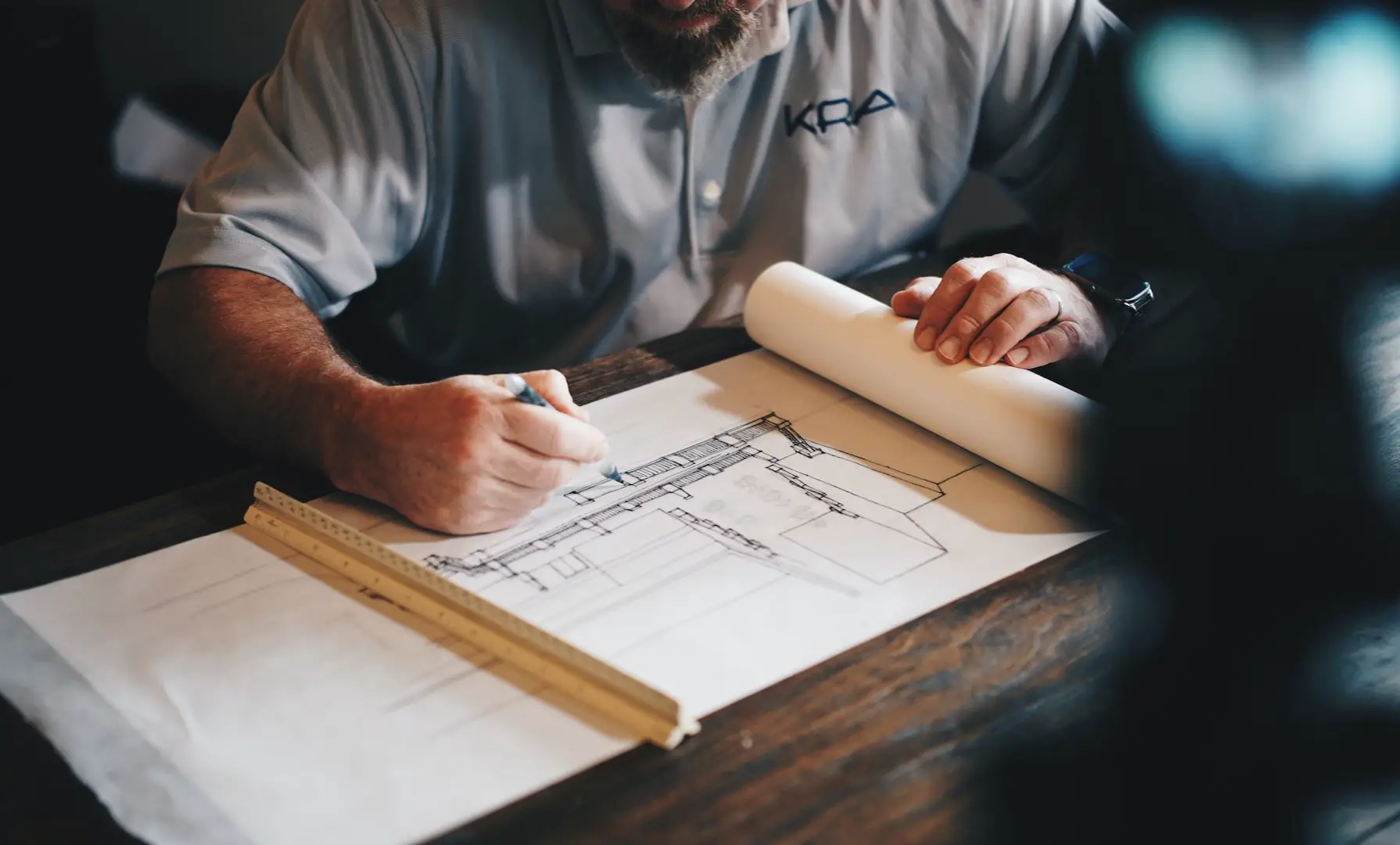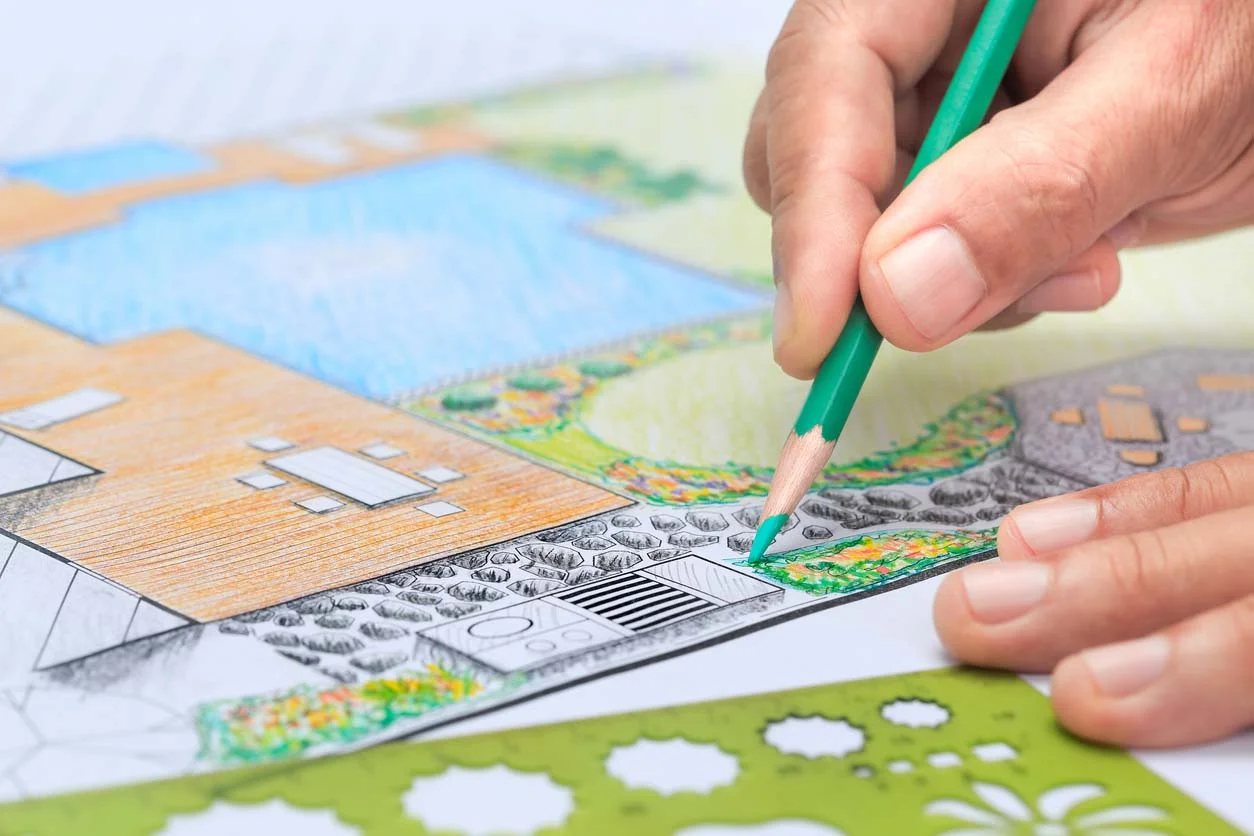Home>diy>Planning & Engineering>How To Become A Licensed Landscape Architect


Planning & Engineering
How To Become A Licensed Landscape Architect
Modified: February 25, 2024
Learn the step-by-step process of becoming a licensed landscape architect, including the necessary planning and engineering skills. Discover how to kickstart your career today!
(Many of the links in this article redirect to a specific reviewed product. Your purchase of these products through affiliate links helps to generate commission for Storables.com, at no extra cost. Learn more)
Introduction
Welcome to the world of landscape architecture! If you have a passion for the environment, design, and creating beautiful outdoor spaces, becoming a licensed landscape architect may be the perfect career choice for you. Landscape architects play a crucial role in shaping the physical environment by designing and planning outdoor areas that are both aesthetically pleasing and functional.
In this article, we will guide you through the steps to becoming a licensed landscape architect. We’ll provide you with the information you need to kickstart your journey in this exciting profession. So, let’s dive in!
Before we get started, it’s important to note that the process of becoming a licensed landscape architect may vary slightly depending on your location. The information presented here is a general guide, and we recommend checking with your local licensing board or professional association for specific requirements in your region.
Now, let’s take a closer look at the steps you’ll need to follow to become a licensed landscape architect.
Key Takeaways:
- Research and understand the profession, obtain a Bachelor’s degree in Landscape Architecture, complete an internship, pass the LARE, apply for licensure, and continuously update skills to become a licensed landscape architect.
- Embrace professional development, attend conferences, workshops, and stay current with industry trends to deliver exceptional designs and solutions as a licensed landscape architect.
Read more: How To Become Landscape Architect
Step 1: Research and Understand the Profession
Before embarking on a career as a landscape architect, it’s essential to thoroughly research and gain a solid understanding of the profession. This will help you make an informed decision and set realistic expectations about the path ahead.
Start by exploring the various aspects of landscape architecture, such as its history, principles, and the role it plays in shaping the environment. Familiarize yourself with the work of renowned landscape architects and the projects they have undertaken. This will give you insight into the different styles and approaches within the field.
Attend conferences, seminars, and workshops related to landscape architecture to gain exposure to current industry trends and challenges. Engage with professionals in the field to learn about their experiences and gather advice on how to succeed in the profession.
Additionally, research the educational requirements and licensing process in your region. Become familiar with the professional organizations and associations that govern the landscape architecture industry. These organizations provide valuable resources, networking opportunities, and support for aspiring landscape architects.
Understanding the profession will not only help you make an informed career decision but also provide you with a solid foundation as you embark on your educational journey.
In the next step, we will discuss the educational requirements for becoming a licensed landscape architect.
Step 2: Obtain a Bachelor’s Degree in Landscape Architecture
A crucial step towards becoming a licensed landscape architect is obtaining a Bachelor’s degree in Landscape Architecture from an accredited institution. This degree will provide you with the necessary knowledge and skills to excel in the field.
Research and identify universities or colleges that offer accredited landscape architecture programs. Accreditation ensures that the program meets specific quality standards, and graduates are well-prepared for the profession.
During your undergraduate studies, you will gain knowledge in various areas such as environmental design, site analysis, landscape planning, plant materials, construction techniques, and more. You will also develop skills in design software, hand drawing, project management, and communication.
Take advantage of hands-on experiences through studio courses and design projects. These opportunities will allow you to apply your skills and creativity to real-world scenarios, further enhancing your understanding of the profession.
Internships or cooperative education programs are also highly beneficial during your undergraduate studies. These experiences provide practical, real-world exposure to the industry, allowing you to work alongside professionals and gain valuable insights into the day-to-day responsibilities of a landscape architect.
It’s important to note that the duration of a Bachelor’s degree program in landscape architecture may vary, typically ranging from four to five years. Be prepared for a rigorous academic curriculum and be dedicated to honing your skills.
Upon completion of your Bachelor’s degree, you will have a solid educational foundation to pursue your career as a landscape architect. In the next step, we will discuss gaining practical experience through internships or work experience.
Step 3: Complete an Internship or Work Experience
Completing an internship or gaining work experience is a vital step in your journey to becoming a licensed landscape architect. This hands-on experience will allow you to apply your knowledge and skills in a professional setting, while also providing valuable networking opportunities.
Search for internship opportunities at landscape architecture firms, design studios, or government agencies. Many universities and professional organizations also offer internship programs specifically tailored for aspiring landscape architects. These programs can provide structured learning experiences and mentorship.
During your internship, you will have the opportunity to work alongside experienced landscape architects and contribute to real projects. You will gain insights into the day-to-day responsibilities of the profession, such as site analysis, conceptual design, project management, and client communication.
Use this opportunity to expand your knowledge, learn from professionals, and develop essential skills that will set you apart in the industry. Take on challenging tasks, ask questions, and actively seek feedback to further enhance your growth and learning.
Additionally, consider joining professional organizations and associations related to landscape architecture. These organizations often offer networking events, workshops, and resources that can help you connect with industry professionals and stay informed about the latest trends and advancements.
Completing an internship or gaining work experience will not only enhance your practical skills but also demonstrate your commitment and dedication to the profession. In the next step, we will discuss the Landscape Architect Registration Examination (LARE).
Tip: To become a licensed landscape architect, complete a degree in landscape architecture, gain work experience, and pass the Landscape Architect Registration Examination. Check your state’s specific requirements for licensure.
Step 4: Pass the Landscape Architect Registration Examination (LARE)
In order to become a licensed landscape architect, you must pass the Landscape Architect Registration Examination (LARE). This exam evaluates your knowledge and competency in various areas of landscape architecture.
The LARE is typically divided into multiple sections or parts, each focusing on different aspects of the profession. These sections cover topics such as project management, design principles, site analysis, construction documentation, and more.
Prior to taking the LARE, it is essential to thoroughly prepare and review the exam content. Utilize study guides, practice exams, and online resources to familiarize yourself with the exam format and content. Consider joining study groups or enrolling in review courses to enhance your preparation.
Keep in mind that the requirements and structure of the LARE may vary depending on your region. It is important to review the specific guidelines and regulations set by your local licensing board or professional organization.
Once you feel confident and prepared, register for the LARE and schedule your exam dates. Be diligent in managing your time and allow sufficient time for studying and preparation. Stay focused and disciplined during the exam, carefully reading and analyzing the questions before providing your responses.
Passing the LARE is a significant milestone on your journey towards becoming a licensed landscape architect. It demonstrates your competency and proficiency in the field.
After successfully passing the exam, you can proceed to the next step, which involves applying for licensure.
Read more: How To Become A Landscape Architect In Texas
Step 5: Apply for Licensure
Once you have successfully passed the Landscape Architect Registration Examination (LARE), the next step in becoming a licensed landscape architect is to apply for licensure.
Research and familiarize yourself with the specific requirements and procedures for licensure in your region. This may involve submitting an application, providing documentation of your education and experience, and paying the required fees.
One crucial component of the licensure process is fulfilling the professional experience requirements. Depending on your region, you may need to accumulate a certain number of work experience hours under the supervision of a licensed landscape architect. This practical experience ensures that you have gained the necessary skills and expertise to practice the profession independently.
Compile and organize all the necessary documents for your licensure application. This may include transcripts of your educational qualifications, letters of recommendation, verification of work experience, and any other specified documentation required by your licensing board.
Upon submission of your application, it will be reviewed by the licensing board or regulatory body responsible for landscape architecture in your region. It is important to provide accurate and complete information to expedite the review process.
Once your application has been reviewed and approved, you will be issued a license to practice as a landscape architect. This licensure grants you the legal authority to offer professional landscape architecture services to clients.
Remember to renew your license regularly and adhere to any continuing education requirements set by your licensing board. This ensures that you stay updated with the latest advancements in the field and maintain the highest standards of professional practice.
Congratulations! You have successfully completed the process of becoming a licensed landscape architect. In the next step, we will discuss the importance of continuous professional development and staying current in the field.
Step 6: Continuously Update Skills and Stay Current in the Field
Becoming a licensed landscape architect is not the end of your journey. It is crucial to continuously update your skills and stay current in the field to remain competitive and deliver the best possible results to your clients.
Attend conferences, seminars, and workshops to stay abreast of the latest trends, technologies, and advancements in landscape architecture. These events provide valuable networking opportunities and allow you to learn from industry experts and thought leaders.
Engage in professional development activities, such as enrolling in continuing education courses or pursuing advanced degrees in a specialized area of landscape architecture. This will help you expand your knowledge and deepen your expertise in a specific domain.
Embrace technology and stay up to date with design software, visualization tools, and emerging digital platforms that can enhance your design and presentation skills. Constantly explore new tools and techniques that can streamline your workflow and improve the quality of your work.
Participate in professional organizations and associations relevant to landscape architecture. These organizations often host webinars, publish journals, and offer resources that keep you informed about industry trends, best practices, and upcoming opportunities.
Develop a habit of continually researching and exploring innovative design concepts, sustainability practices, and evolving environmental regulations. This will ensure that your designs align with current standards and address the growing need for sustainable and eco-friendly landscapes.
Collaborate with other professionals in related disciplines, such as architects, urban planners, and environmental scientists. This interdisciplinary approach can broaden your perspective and foster creative solutions to complex design challenges.
Seek feedback from clients, peers, and mentors to continuously improve your skills and deliver exceptional results. Actively listen to their suggestions and criticisms, and utilize them as learning opportunities to enhance your design process and communication skills.
Remember, the field of landscape architecture is constantly evolving. By continuously updating your skills and staying current in the field, you can continue to grow as a professional and contribute to the sustainable development of our outdoor spaces.
Congratulations on completing all the steps to becoming a licensed landscape architect! With dedication and a commitment to ongoing growth, you are well on your way to a successful and fulfilling career in this exciting profession.
Conclusion
Congratulations! You’ve reached the end of this comprehensive guide on how to become a licensed landscape architect. Throughout this journey, you’ve learned about the necessary steps to pursue this rewarding career.
By conducting thorough research and gaining a deep understanding of the profession, you’ve set the foundation for your success. Obtaining a Bachelor’s degree in Landscape Architecture from an accredited institution has equipped you with the knowledge and skills needed to excel in the field.
Completing an internship or gaining work experience has provided you with valuable hands-on exposure to the industry, allowing you to apply your skills and learn from professionals. By passing the Landscape Architect Registration Examination (LARE), you’ve demonstrated your competency and expertise.
Applying for licensure has given you the official recognition to practice as a licensed landscape architect. From here, the journey continues as you commit to continuously updating your skills and staying current in the field.
Remember to embrace professional development opportunities, attend conferences and workshops, and adapt to emerging technologies to enhance your capabilities as a landscape architect. Stay connected with professional organizations and actively engage with your peers to keep up with industry trends and advancements.
By continuously improving your skills, you’ll be able to deliver exceptional designs and solutions that create beautiful and sustainable outdoor spaces for future generations to enjoy.
So, take the knowledge and insights you’ve gained from this guide, combine it with your passion for the environment and design, and forge ahead on your journey to becoming a licensed landscape architect. The possibilities are endless, and the impact you can make in shaping our environment is immeasurable.
Best of luck on your journey, and may your career as a licensed landscape architect be filled with creativity, fulfillment, and success!
Frequently Asked Questions about How To Become A Licensed Landscape Architect
Was this page helpful?
At Storables.com, we guarantee accurate and reliable information. Our content, validated by Expert Board Contributors, is crafted following stringent Editorial Policies. We're committed to providing you with well-researched, expert-backed insights for all your informational needs.















0 thoughts on “How To Become A Licensed Landscape Architect”